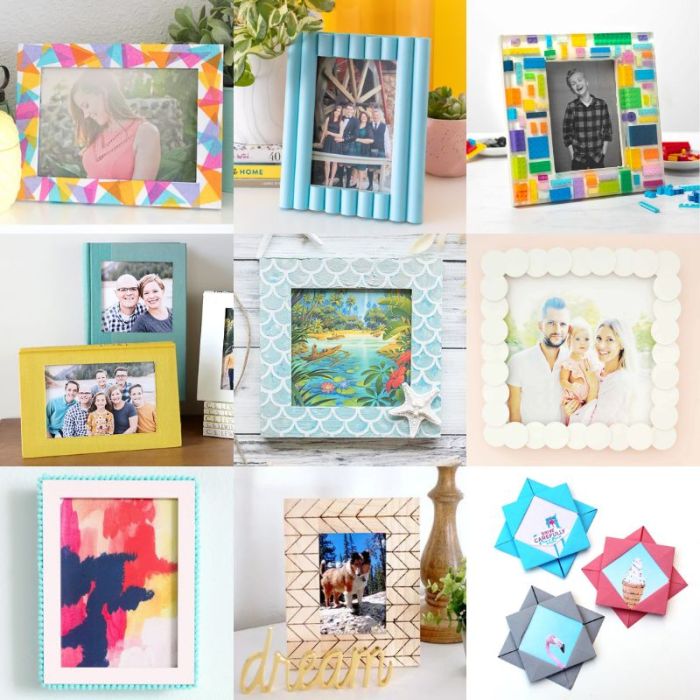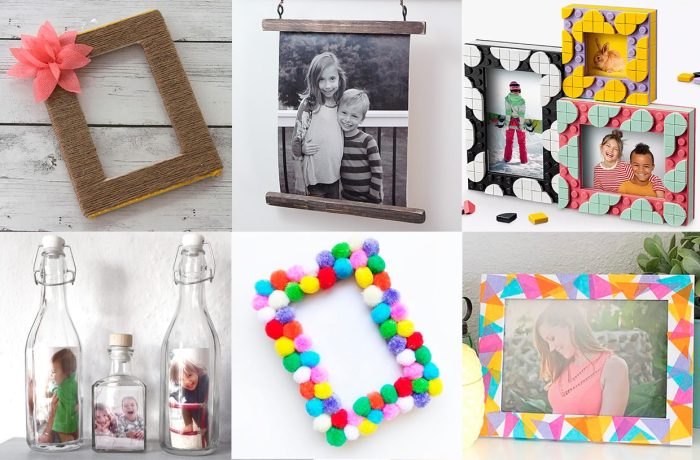DIY digital photo frame sets the stage for this enthralling narrative, offering readers a glimpse into a story that is rich in detail and brimming with originality from the outset. Building a DIY digital photo frame is a rewarding project that allows you to showcase your cherished memories in a unique and personalized way. Unlike commercially available frames, DIY projects offer complete customization, enabling you to tailor the frame’s design, functionality, and content to your exact preferences. From simple picture displays to sophisticated slideshows and video presentations, the possibilities are endless.
This comprehensive guide will walk you through the entire process, from selecting the right materials and designing the frame to programming the software and troubleshooting any potential issues. Whether you’re a seasoned DIY enthusiast or a curious beginner, this step-by-step approach will empower you to create a stunning and functional digital photo frame that you’ll cherish for years to come.
Designing the Frame: Diy Digital Photo Frame

The design of your digital photo frame is crucial, as it sets the tone for the overall aesthetic and functionality of your project. A well-designed frame not only enhances the visual appeal of your photos but also provides a practical and user-friendly experience.
Frame Styles and Materials
The choice of frame style and material significantly impacts the overall look and feel of your digital photo frame. Here are some popular options:
- Wood: Wood frames offer a classic and timeless look, adding warmth and sophistication to any room. They are available in various wood types, stains, and finishes, allowing you to customize the frame to match your decor. Oak, cherry, and walnut are popular choices for their durability and aesthetic appeal.
- Metal: Metal frames provide a modern and sleek look, often used in contemporary interiors. Aluminum, steel, and brass are common materials, each offering distinct visual characteristics. Metal frames can be painted or powder-coated in various colors to match your style.
- Plastic: Plastic frames are lightweight, affordable, and available in a wide range of colors and designs. They are a practical option for budget-conscious projects, offering versatility and durability. However, they may not have the same level of sophistication as wood or metal frames.
Creative Design Ideas
When designing your digital photo frame, consider incorporating creative elements to enhance its visual appeal and functionality:
- Customizable Backdrop: Allow users to change the background color or image to match their mood or decor. This adds a personal touch and enhances the visual experience.
- Integrated Shelf: Consider adding a small shelf below the screen to display decorative items or additional photos, creating a cohesive display. This can enhance the overall aesthetic and provide a functional element.
- Hidden Controls: Incorporate touch-sensitive controls or a remote control to provide a clean and clutter-free look. This minimizes distractions and enhances the visual appeal of the frame.
Inspiration
For inspiration, browse online galleries and design websites featuring DIY digital photo frames. Pay attention to the frame styles, materials, and creative elements used in these projects. Consider incorporating elements that resonate with your personal style and project goals.
Software and Programming

The heart of your digital photo frame lies in the software that controls it. This software is responsible for displaying images, videos, and slideshows, and it’s what gives your frame its functionality.
Software Options, Diy digital photo frame
There are several software options for controlling a digital photo frame, each with its strengths and weaknesses.
- Dedicated Photo Frame Software: This type of software is specifically designed for digital photo frames. It offers features like slideshow transitions, image editing, and scheduling. Some popular options include Digital Photo Frame Software by NCH Software, PhotoStage Slideshow Software, and PhotoShow Pro. These software programs often have user-friendly interfaces and are relatively easy to set up and use.
- General-Purpose Media Players: Software like VLC Media Player or Windows Media Player can also be used to display images and videos on a digital photo frame. While these players are not specifically designed for photo frames, they offer a wide range of media playback options and can be customized to fit your needs.
- Raspberry Pi-Based Solutions: The Raspberry Pi is a small, affordable computer that can be used to create a digital photo frame. Using a Raspberry Pi, you can install operating systems like Raspbian or Ubuntu, along with software like “feh” (a simple image viewer) or “photoframe” (a dedicated photo frame application) to create a custom photo frame.
Programming the Frame
Programming a digital photo frame involves writing code to control its behavior. This can range from simple tasks like displaying a slideshow to more complex features like interacting with external devices or accessing online content.
- Scripting Languages: Python and JavaScript are popular scripting languages for creating digital photo frame applications. These languages are relatively easy to learn and use, and they offer a wide range of libraries and tools for interacting with hardware and software.
- Programming Languages: C++ and Java are more advanced programming languages that offer greater control over the frame’s hardware and software. These languages are more complex to learn but can be used to create more sophisticated applications.
Resources and Tutorials
There are numerous resources available to help you learn about software and programming for digital photo frames.
- Online Tutorials: Websites like YouTube, Instructables, and Raspberry Pi Foundation offer a wide variety of tutorials on creating digital photo frames using various software and hardware. These tutorials often provide step-by-step instructions and code examples, making it easier to get started.
- Online Forums: Forums like Reddit, Raspberry Pi forums, and electronics forums are great places to ask questions and get help from experienced users. You can find discussions on specific software options, programming techniques, and troubleshooting tips.
- Documentation: The documentation for the software you choose to use will provide detailed information on its features, functionality, and programming interfaces. Refer to these documents for specific instructions and examples.
Embarking on a DIY digital photo frame project allows you to unleash your creativity and technical prowess, resulting in a personalized masterpiece that reflects your unique style and memories. By following this guide, you’ll acquire valuable skills and gain a deeper understanding of the technology behind digital displays. As you navigate through the steps, remember to embrace the process and experiment with different design ideas and customization options. The journey itself is just as rewarding as the final product, allowing you to personalize your creation with unique touches that make it truly your own.
Creating a DIY digital photo frame is a fun and rewarding project, especially if you’re looking to showcase cherished memories in a unique way. You can even personalize it further by incorporating a DIY coupon for a special discount or offer, making it a truly unique and thoughtful gift. The possibilities are endless when it comes to DIY projects, and a digital photo frame is a great way to unleash your creativity and add a personal touch to your home décor.
